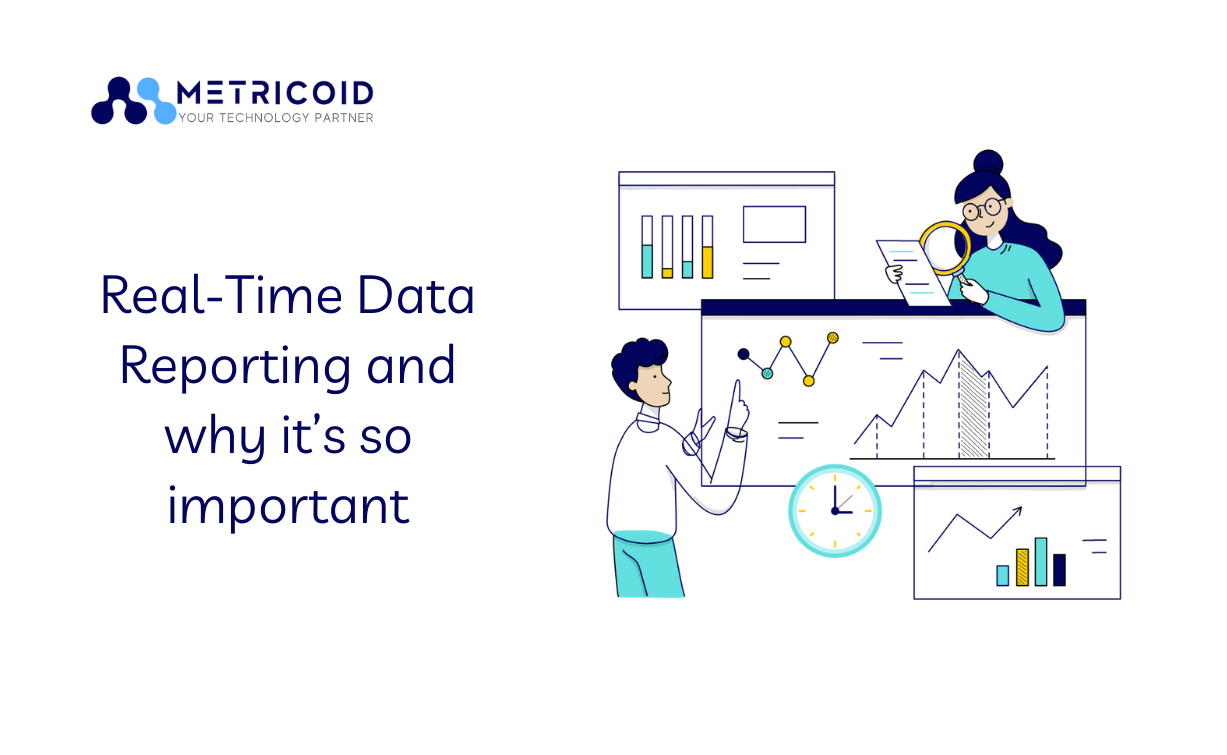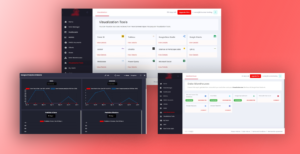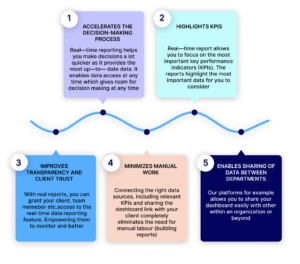Real-Time Data Reporting and why it’s so important

Good Decision making is one very crucial modern-day element when it comes to business, brand, or company management. It however takes more than just human skills to make the most accurate business decisions these days as Business Intelligence became very vital in the modern era.
Business intelligence (BI), which can be referred to as the procedural and technical infrastructure that collects, stores, and analyzes the data produced by a company’s activities is now the bedrock of a successful business journey. In fact, the most accurate decisions that were taken have been traced to having a backing of Real-time Data analytics.
In the past, businesses reviewed data (Financial data, ad conversion data, leads, etc.) at either daily, weekly, monthly, or quarterly intervals in creating performance reports this was otherwise called static reporting.
Since manual calculations and reviewing of data reports were necessary, reaching key decisions always took a while as there was a time-lapse between when data was gotten to when a decision was to be reached.
Meaning even though business intelligence was already in play at this time back then, arriving at the most accurate decisions was still a mirage as time lapses between when data was gotten and when a decision was reached created quite a gap.
Business Intelligence experienced quite an advancement as it became possible to get Real-time reporting, that is access to the most current data at every instant in time. Businesses could check performance status at any time by accessing the most up-to-date results because that data updates continuously
Table Of Contents
What is Real-Time Data Report?

Real-time reporting is a business intelligence (BI) feature related to gathering data that enables users to check the status of their performance at any given moment to get the most up-to-date results. It involves collecting data and relaying it to users in real-time so as to aid timely and more accurate data-driven decisions from the board of decision-makers.
Users may access this data through an online portal, software platform, or similar option, and it’s available with the most up-to-date information at all times. It’s also possible for a variety of users, such as a variety of employees or your clients, to access this information if you choose to share it.
[Monitor activity as it happens on your site or app].
Real-Time allows you to monitor activity as it happens on your site or app. The reports are updated continuously and each hit is reported seconds after it occurs. For example, you can see how many people are on your site right now, which pages or events they’re interacting with, and which goal conversions have occurred.
The components of real-time data analytics include:
- An aggregator that compiles data event streams (and perhaps batch files) from a
variety of data sources; - A broker that makes real-time data available for use; and
- An analytic engine that analyzes data, correlates values and blends data streams
together.
And a stream processor that receives and sends data streams thereby executing real-time application analytic and logic
Other technologies that make real-time analytics possible include:
- Processing In Memory (PIM)- a chip architecture in which the processor is integrated into a memory chip to reduce latency.
- In-database analytics – a technology that allows data processing to be conducted within the database by building analytic logic into the database itself.
- In-memory analytics -an approach to querying data when it resides in random access memory, as opposed to querying data that is stored on physical disks.
- Massively parallel programming (MPP)- the coordinated processing of a program by multiple processors that work on different parts of the program, with each processor using its own operating system and memory.
Examples of real-time analytics:
- Real-time credit scoring. Instant updates of individuals’ credit scores allow financial institutions to immediately decide whether or not to extend the customer’s credit.
- Financial trading. Real-time big data analytics is being used to support decision-making in financial trading. Institutions use financial databases, satellite weather stations, and social media to instantaneously inform buying and selling decisions.
- Targeting promotions. Businesses can use real-time analytics to deliver promotions and incentives to customers while they are in the store and surrounded by the merchandise to increase the chances of a sale.
- Healthcare services. Real-time analytics is used in wearable devices — such as smartwatches — and has already proven to save lives through the ability to monitor statistics, such as heart rate, in real-time.
- Emergency and humanitarian services. By attaching real-time analytical engines to edge devices — such as drones — incident responders can combine powerful information, including traffic, weather, and geospatial data, to make better informed and more efficient decisions that can improve their abilities to respond to emergencies and other events.
How Real-Time Data Reporting works (How it can be beneficial to businesses)

Real-time data analytics tools can either push or pull data. Streaming requires the ability to push massive amounts of fast-moving data. When streaming takes too many resources and isn’t practical, data can be pulled at intervals that can range from seconds to hours. The pull can happen in between business needs that require computing resources so as not to disrupt operations.
The response times for real-time analytics can vary from nearly instantaneous to a few seconds or minutes. Some products like self-driving cars need to respond to new information within milliseconds. But other products like an oil drill or windmill can get by with a minute between updates.
Several minutes might be enough for a bank to look at the credit scores of loan applicants.
Ways to use Real-Time Data
With Real-Time Data, you can immediately and continuously monitor the effects that new campaigns and site changes have on your traffic. Here are a few of the ways you might use Real-Time:
- monitor whether new and changed content on your site is being viewed
- understand the usage of your mobile app through event tracking
- see whether a one-day promotion is driving traffic to your site or app, and which pages these users are viewing
- monitor the immediate effects on traffic from a blog/social network post or tweet
- verify that the tracking code is working on your site or app
- monitor goal completions as you test changes to your site
To help you in getting a thorough understanding of Real-Time Data Reporting and ultimately ensuring you make the most accurate data-driven decision, Metricoid highlights some useful ways Real-Time data can be of importance to your business, brand, or company.
Why Real-time Data Reporting is so important to modern-day business
Accelerates the decision-making process:
Real-time reporting helps you make decisions a lot quicker as it provides the most up-to-date data. Thereby enabling data access at any time thereby prompting decision making at any time.
Highlights KPIs:
Real-time report allows you to focus on the most important key performance indicators (KPIs). The reports highlight the most important data for you to consider, and they update with the most current information, so you can Re-strategize when needed
Improves transparency and client trust:
With Real-time reports, you can grant your client, team members, or management access to the real-time data reporting feature. Empowering them to monitor and better understand their data.
Minimizes manual work:
Connecting the right data sources, including relevant KPIs, and sharing the dashboard link with your client completely eliminates the need for manual labor (building reports). Your client can always access the real-time data from the dashboard when needed.
Enables sharing of data between departments:
This platform for example allows you to share the dashboard easily with others within an organization or beyond
Minimizes Risk:
Real-time data analysis and metrics will have a profound impact on your predictive models and estimates. More importantly, this technology can help you mitigate risk at an unprecedented level. Risk accompanies every move or decision in the world of business, but if you can stay informed about what’s happening and how you can act on it, that means nearly eliminating risk. While predictive strategies are never a perfect science, you can indeed be more prepared for a specific outcome or result.
Fosters Competitive Pricing Strategies:
The kind of performance and consumer sentiment data real-time analysis provides means you can come up with excellent pricing for various services or products. It also allows for well-timed discounts and promotions that can have a significant impact on your bottom line. Companies who adopt data-driven marketing and real-time analysis are more likely to have an advantage over their competition, further increasing profitability.
With real-time data analytics, you can measure price elasticity more accurately, divided into varying factors like persona or demographic, sales channels, and even location. As with all data, you can leverage it to influence future strategies, too.
Strengthens Your Brand:
Real-time analysis works to strengthen all aspects of a company or team, from marketing and promotions to customer support. That is, perhaps, the most transformative benefit of implementing real-time analysis. Thirty-three percent of elite marketers agree the right technologies and data collection systems are their most useful tools for understanding customers.
How companies are using real-time data Analytics for growth today

Google uses big data to understand what we want from it based on several parameters such as search history, locations, trends, and many more.
After that, it goes through an algorithm where complex estimations are done and afterward Google easily shows the arranged or positioned indexed lists as far as significance and authority intended to coordinate the user’s prerequisite.
Google easily shows the ranked search results in terms of relevance and authority formulated to match the user’s requirement.
Google has acquired some techniques to understand users’ requirements like Indexed pages, real-time feeds, sorting tools, knowledge graph pages, literal and semantic search, google translate, etc.
Amazon
The company has access to a huge amount of its customers’ data, such as names, addresses, payments, and search history. Amazon uses this information to improve customer relationships and serve customers faster and more efficiently
Burberry
Burberry uses big data and artificial intelligence to improve productivity, sales, and customer satisfaction.
Their customers use loyalty programs in their mobile apps. And for those who use such services, the company asks them to share data and then uses the information to provide recommendations for online and offline stores that can see a customer’s purchase history, preferences, and social media activity through a tablet. They can use this data to provide a more personalized experience to increase sales.
All items in Burberry stores have unique RFID tags. And when customers visit the store, the mobile app will communicate directly with them about different products
Apple
We all know that Apple is an expert in using advanced technology. So, they are using big data technologies and now they become involved in big data analytics, with the technology driving their plenty of decisions.
The data collected by them is used by the company to consider the best approach toward consumers with its new products and services.
By using big data, Apple can find how people are using apps in real life and change future designs to fit with customer preferences.
The two major areas of use of big data by Apple are: Application design and Keep a track of people’s health and improving lifestyle.
For instance, the Apple watch is not just wearable but also has the ability of data gathering. Now, Apple watches can track what users do during the day.
Therefore, wearable devices by Apple have great potential with big data and they would want to capitalize on it.
Metricoid Technology Solutions
Uses Real-Time Data to help Marketers, Data Scientists, Data Analysts, and businesses across industries attain sustainable growth faster. This was done by developing a tool that Automates Data collection, centralizes all marketing data in one place, allows data to be transformed and fed to various Visualization tools or Data warehouses. This tool creates connections between many data sources and destinations in REAL-TIME (Real-Time Data Pipelines & Marketing Reports), also allows the creation of custom dashboards and reports with all marketing data. This tool brought about freedom from manual coding, and tedious data collection and thereby gave room for focus on higher-value activities

Essential tools for real-time reporting
When implementing real-time reporting for your business, there are a few tools that can help. Check out this case study for a very good tool to consider. This tool is unique in the sense that it enables analysts to manipulate more complex data faster, get more accurate results, and make more data-driven decisions. Connecting with all data sources, visualization tools, and Data Warehouses, can be done easily on this singular platform. Check out Case Study for the full feature:
Metricoid Technology Solutions Private Limited with a team of industry experts with over 12 years of experience in digital IT and SaaS or iPaaS development is a development consulting partner that can be trusted to lead and collaborate on the growth of a startup while keeping costs down. The SaaS developers at Metricoid will create a
comprehensive, safe, and lightning-fast SaaS platform that you can license to your customers.






